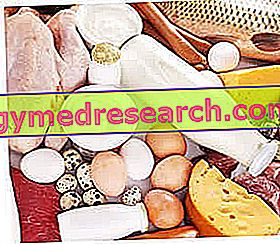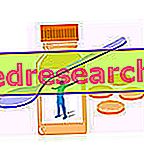Food liposuction
The oloproteic diet is an aforementioned food strategy "Food Liposuction", a nickname certainly of great effect (liposuction = very rapid and fatigue-free weight loss), but obviously completely unrelated to what concerns the etymological correctness of the term.

Based on what was disclosed by the doctors:
- Giuseppe Castaldo (Physician-surgeon specialist in Internal Medicine, Gastroenterology and Food Science, Director of the UO Dietology and Clinical Nutrition AORN Moscati AV)
- Dr. Assunta Vitale (Degree in Dietetics UO Diet and Clinical Nutrition AORN Moscati AV)
- Dr. Laura Castaldo (Physician-Surgeon specializing in Child Neuropsychiatry)
the holoproteic diet would have gained the nickname of food liposuction by virtue of its amazing outcome on the reduction of adiposities localized in the peritrocanteric area (also known as "culotte de cheval") and on the remodeling of the silhouette; furthermore, the oloproteic diet would produce an improvement in the macro and the microcirculation of the legs.
Holoproteic ® Diet: How does it work?
The oloproteic diet is in fact a diet with a nutritional protein and ketogenic tendency. It is applied in a special medical center and used for the treatment of obesity with or without metabolic pathologies, in particular for those ginoids that do not respond correctly to traditional low-calorie therapy. This does not mean that the holoprotein® diet can also be useful only for the achievement of an aesthetic purpose in normal weight subjects.
The scientific bases of the holoprotein diet are the studies of Prof. Blackburn, of the "Harvard University", which took it upon itself to learn what the real protein needs are during fasting. According to the professor, a carbohydrate deprivation can reset the anabolic effect of insulin on adipose tissue; moreover, with a protein intake of about 1.2-1.5g / kg of ideal weight (against 1g / kg of normality) it is also possible to protect the lean mass of the subject, preventing it from being compromised by catabolism. Thus, in this way, Blackburn avoids any protein excess (characteristic of dietary regimes such as the Dukan diet) by guaranteeing nitrogen balance and allowing you not to suffer from hunger thanks to the constant state of ketosis.
In the wake of the professor, about 20 years ago the oloproteic diet was born, more innovative than the previous one thanks to the following corrections:
- Use of amino acids stimulating the synthesis of GH and serum purified proteins with an intake of 1.4g / kg of ideal weight
- Carbohydrate share between 10 and 20g / day (vegetable fructose only) and lipids of 10g / day (1 tablespoon of extra virgin olive oil)
- Protein intake from supplements and food in equal parts
- Maximum duration of 21 days, which guarantees the absence of side effects
- Integration of alkalizing mineral salts to compensate for the acidification of ketosis
- Precise integration of minerals that tend to lack due to the diuretic effect of the ketogenic diet
- Integration of trace elements, vitamins, FOS, omega 3, draining, uricosuric, hepatoprotective and modulating hyperactivity hypertherapy
- Insertion of a diet re-education protocol inspired by the Mediterranean diet.
According to the holoproteic diet system, the liposuction-like effect derives from the fact that the liposynthesis and lipolysis enzyme systems of adipose tissue (structuring and demolition) are regulated by a complex hormonal axis. Insulin and cortisol favor the adipose deposit in the abdominal area, while oestrogens (female sex hormones) orient the accumulation in the ginoid sense, that is near the trochanters of the femurs (hypothetically as an energy reserve for lactation).
To demonstrate this system, a study conducted by TM Loftus and MD Lane has shown that insulin and estrogen stimulate PPARγ ( peroxisome proliferator-activated receptor gamma receptor ), which regulates both the storage of fatty acids (favoring it), and glucose metabolism (reducing blood sugar). At the same time, they showed an almost opposite effect on GH (somatotropin or growth hormone), that is to say of increased lipolysis and inhibition of liposynthesis. Some medications for diabetics intervene on these receptors, reducing blood sugar without raising insulin; in mice, it has been shown that a genetic modification of exclusion of PPARγ prevents the synthesis of adipose tissue. Finally, the oloproteic diet attempts to minimize insulin and increase GH secretion to help remove gynoid-type adipose tissue.
That's not all, again based on what the authors disclose, it seems that the holoprotein® diet favors the disappearance of the known symptoms linked to premenstrual syndrome, perhaps with regard to the action contrasting estrogen by GH. Furthermore, it seems that the success of the oloproteic diet reduces a very wide symptom due to the compromise of venous and lymphatic return (itching, edema, numbness, cramps, discoloration, etc.).
Holoproteic ® Diet: Criticality
Let's start by pointing out that any ketogenic diet is a diet that is harmful to health. It is not just a personal opinion and it is possible to find innumerable popular and scientific articles (based on experimental research) to support this imputation. Obviously, also in this case it is "the dose that makes the poison"; limiting the treatment to 21 days, the authors get rid of any responsibility and, inserting the diet re-education protocol, they also comply with every future duty towards patients. The fact remains that convincing the population that to lose weight and become "beautiful" it is necessary to face an unbalanced diet that requires a thousand food supplements, it is absolutely NOT an educational behavior, far from it! To read more carefully the harmful effects of ketogenic diets it is possible to consult the article: Ketogenic diet? No thanks!
It should also be added that it is absolutely NOT true that carbohydrate deprivation eliminates the anabolic effect of insulin; rather, it drastically reduces it and, among other things, it can do it ONLY if the portions of the other energy macronutrients are "starved" (as in this case). This is justifiable by the fact that other molecules are also able to stimulate insulin secretion and, if it is true that carbohydrates are the most excessive nutrients in the collective nutrition of Italians, it is also true that by eating large amounts of proteins and lipids, it is however, he is experiencing an insulin surge.
The holoproteic diet is not a high-protein diet in an absolute sense, since the quantity of peptides is the "normal" one; however, it is in percentage terms, since the plastic contribution covers about 70% of the total energy. A little too much, especially considering that (in a balanced and viable diet for a sedentary person) it should be limited to 12-13%!
It is hard to believe that, during an "Auschwitz" diet, ketone bodies are sufficient to induce the anorexia that is needed to avoid hunger attacks. With only the carbohydrates of vegetables, the use of a tablespoon of oil a day and providing 1.5g of protein per kg of physiological body weight (from supplements and foods), a desirable adult weight of 65kg would take less than 600kcal per day (depending on how many vegetables you consume). Absolutely NOT practicable. Among other things, it would also be very interesting to understand how azotemia can be in equilibrium, since if it is true that from 0.75 to 1.5g of protides per kg of weight it is possible to meet the plastic needs of anyone, it is equally true that this applies under conditions of eunuteration. By reducing carbohydrates and lipids, it is inevitable that part of the amino acids circulating in the blood will end up in the hepatic production of glucose (neoglucogenesis); well, this process leaves behind a lot of waste, or nitrogen groups, which inevitably become superior to what happens in a balanced diet.
It is also unlikely to significantly change the distribution of body fat; the fact that many women see themselves "wide and narrow above" after a balanced diet, simply derives from the fact that (due to the hormonal issue described) these kilos are the last to leave. Changing the hormonal axis of estrogens (fortunately) is not as simple as insulin (subject to nutritional flows), and the same is true for GH (otherwise, the average musculature of "natural" bodybuilders would certainly be much higher) . Among other things, let us remember that the hormones function as "keys" and that the tissues are provided with special "locks"; absurdly, even by changing the amount of "circulating keys", one would then have to deal with the "locks in the body"; a nice headache. There is certainly a strong correlation between the components of: adipose tissue, insulin and estrogens, already widely documented in the analysis of the typical etiological etiology of polycystic ovaries, but to affirm that they can model the body as liposuction with supplements and foods, it's really very risky.
The correlation between the oloprotein diet and the symptoms of premenstrual syndrome is interesting, especially considering that it is a notoriously transient condition and that, at the end of this passage, a spontaneous redistribution of the fat takes place (from ginoid to android ). If most patients are in this phase, here is how the reduction of peritrocanteric fat occurs. With regard to venous and lymphatic return, on the other hand, this improves indiscriminately with the reduction of excess weight and not necessarily with the help of the holoprotein diet.
Ultimately, it is a non-educational, unsustainable system, especially for those with an active lifestyle. It requires a massive intake of food supplements which, if on the one hand they are necessary, on the other it will be difficult to alleviate the workload of the liver and especially of the kidneys. It is based on interesting research and probably with a concrete fund, but the data provided by the authors are not impartial, therefore they are absolutely not very indicative.



